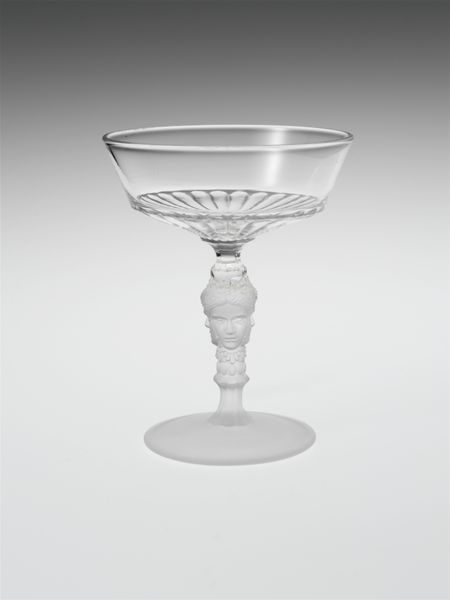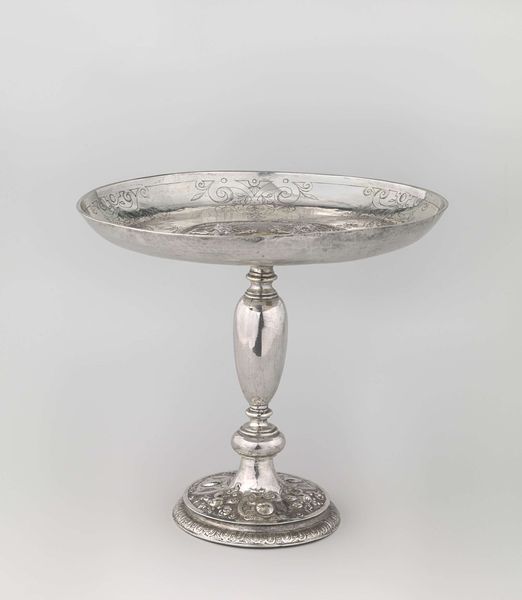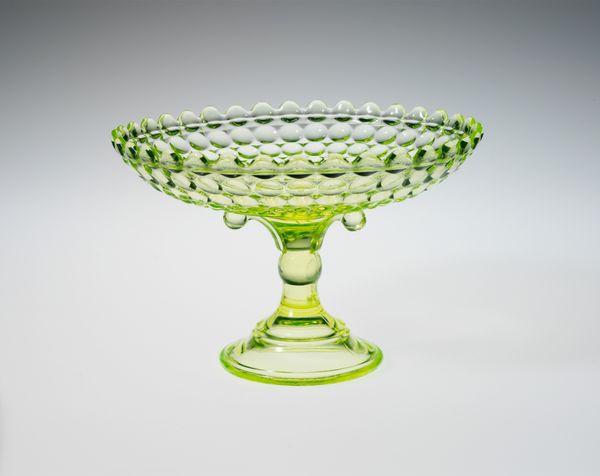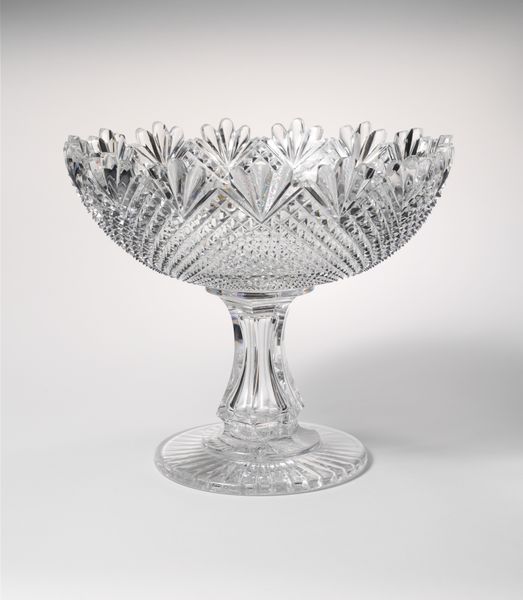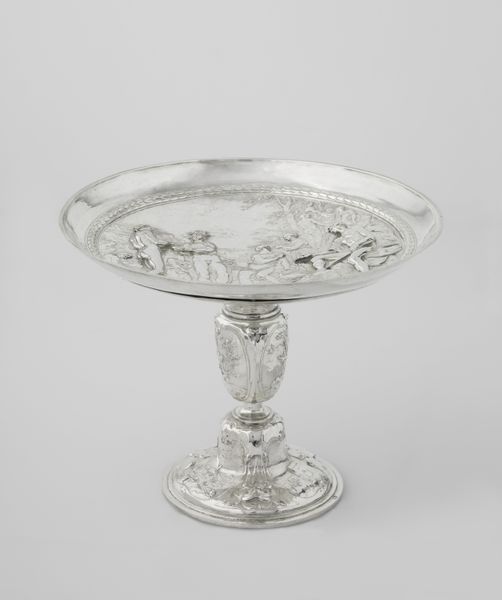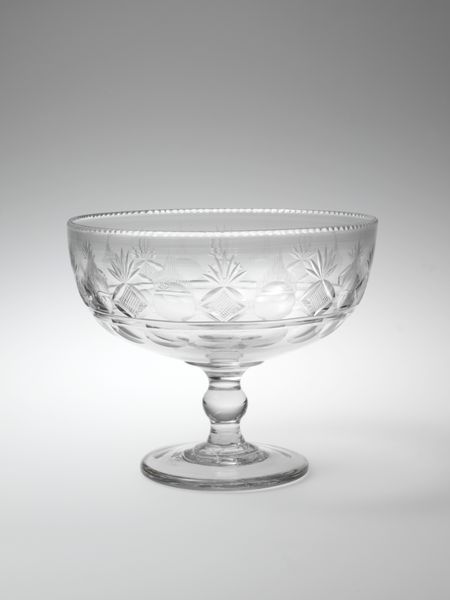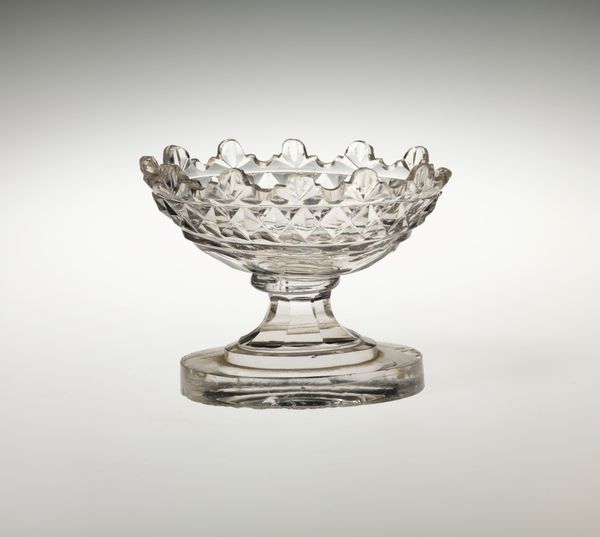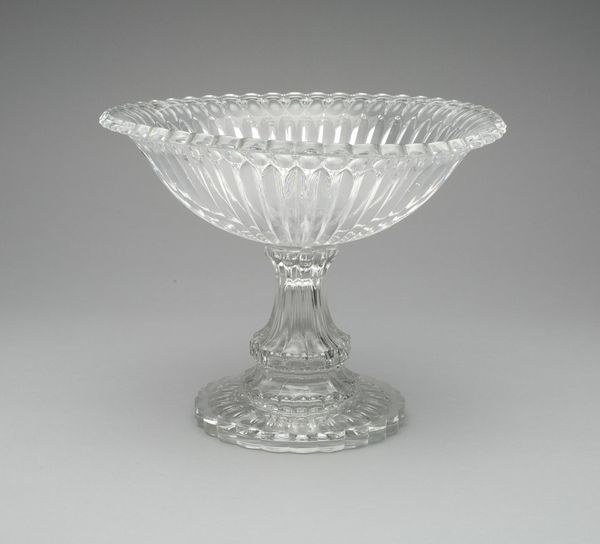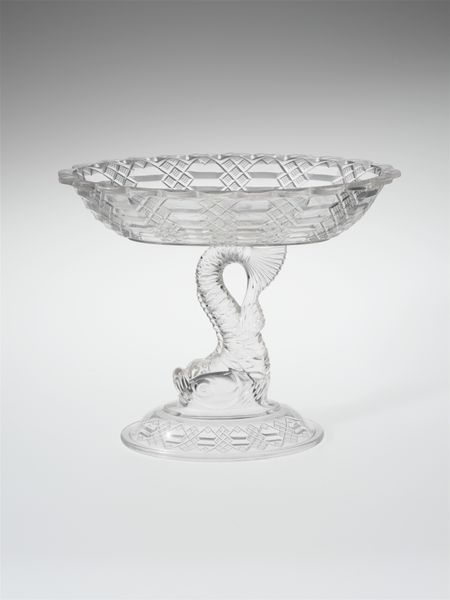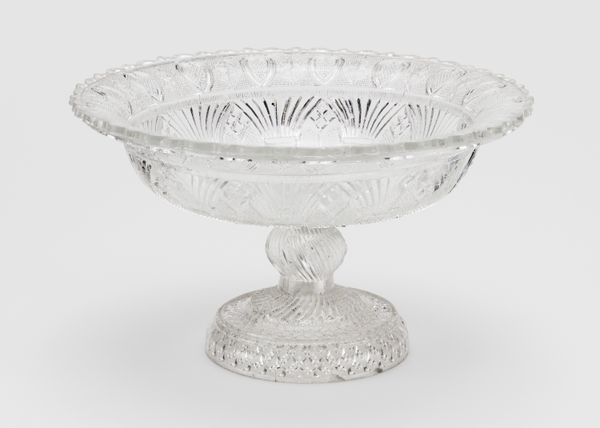
glass
#
3d sculpting
#
circular oval feature
#
3d model
#
3d printed part
#
plastic material rendering
#
virtual 3d design
#
round design
#
glass
#
3d shape
#
wash background
#
metallic object render
#
united-states
#
decorative-art
Dimensions: H. 4 1/8 in. (10.5 cm); Diam. 9 3/4 in. (24.8 cm)
Copyright: Public Domain
Curator: Here we have a glass cake stand, likely produced between 1850 and 1870 by Bakewell, Pears and Company. It’s part of the decorative arts collection here at the Met. Editor: My initial reaction is that it's incredibly delicate. The transparency of the glass almost makes it disappear, putting full focus on whatever delicacy would sit atop it. Curator: Precisely. Such objects played a key role in Victorian social rituals. The burgeoning middle class sought to emulate aristocratic lifestyles. Elaborate tea parties and desserts became a status symbol. This stand allowed the presentation of baked goods as works of art themselves. Editor: The material choice – glass – is really fascinating here. Not just any glass, but pressed glass, which became more affordable thanks to industrial production methods. It allowed for mass manufacture of ornate pieces that previously would have been hand-blown and very expensive. It democratized elegance, in a way. Curator: Indeed. It’s crucial to understand how mass production shifted social customs. Pieces like this cake stand facilitated that cultural shift, placing aspirational beauty and bourgeois values into American homes. Its visibility signifies an age when outward appearance mattered immensely. Editor: And speaking of appearance, just look at that repeating scalloped design on the rim! It speaks volumes about the value placed on ornamentation. Consider the labor too—while mechanized, the process still required skilled workers to oversee the machines, manage the molten glass, and ensure quality. This stand represents both innovation and a reliance on human craft. Curator: It’s a window into Victorian societal dynamics, from industrial labor practices to consumer aspirations. Editor: I agree. A seemingly simple glass object speaks volumes about materiality, social climbing, and the changing landscape of American manufacturing. Curator: Food for thought, indeed, reflecting on the cake stand’s function as both an art object and social artifact. Editor: Definitely! Now I have to go find something sweet.
Comments
No comments
Be the first to comment and join the conversation on the ultimate creative platform.
